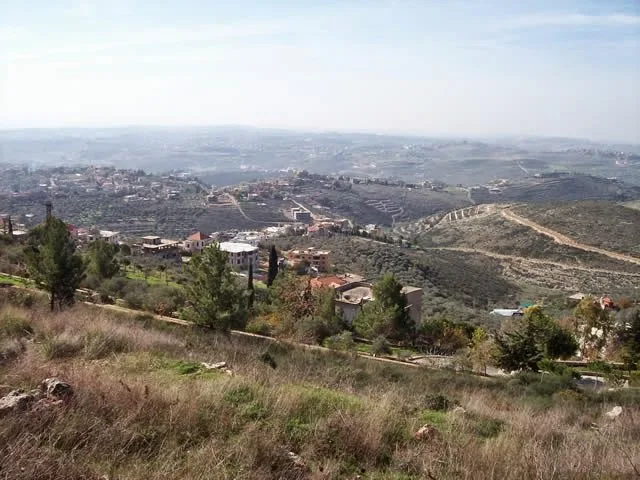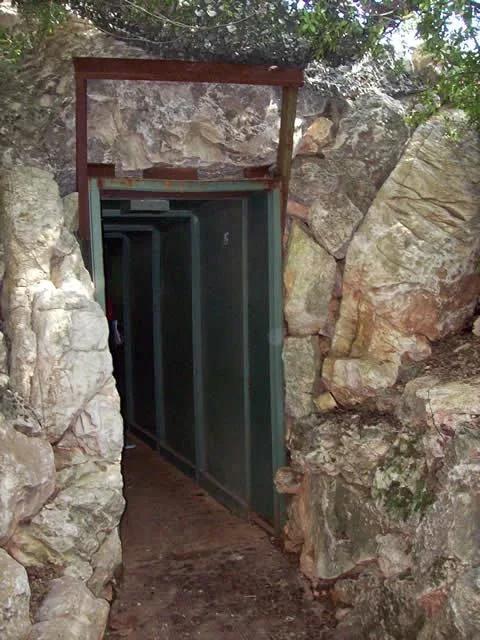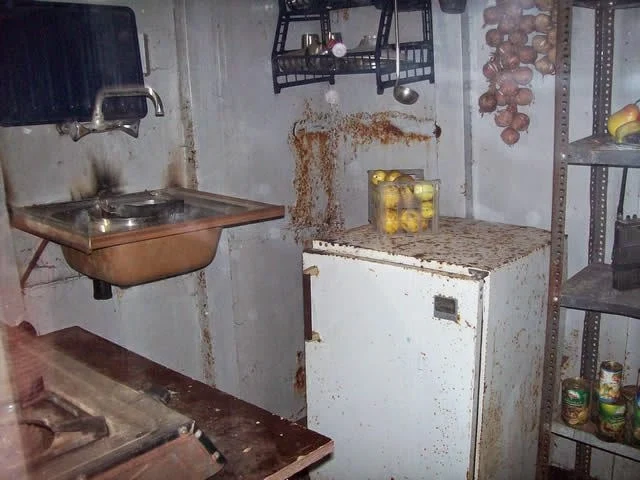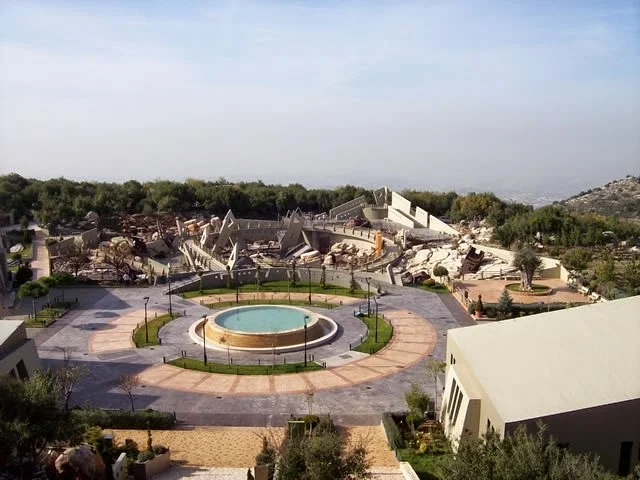Love and resistance among the ruins of war in Southern Lebanon.
ED Noor: Needless to say, any articles found in the JMSM with its Islamophobic slant and utter hatred of all things southern Lebanese, this museum is painted in rather disdainful terms, to be polite about the matter. In each review, of course the ignominious defeat of the cowardly brutal Israelis at the hands of Hezbollah is painted as a small thing unworthy of note. Of course, that is simply because they did not stand a chance fighting righteous men in a war in which they had the clear tactical advantage, let alone the firepower.
Source: Fig Trees and Vineyards
Please see: HEZBOLLAH: MODEL FOR MANLINESS
By Richard
Edmondson
Southern
Lebanon is a beautiful place.
The terrain
is very hilly and mountainous, offering some breathtaking views, with a
latticework of mountaintop villages that look like they could have sprung from
the imagination of a Norman Rockwell, or at least his Middle Eastern
counterpart.
In short,
there is an air of authenticity about the place.
It is here,
nestled in the village of Mleeta, one may find what is surely one of the most
unique tourist attractions in the world. Run by the Lebanese Association for
Tourism and Tradition, it is officially known as the Mleeta Resistance Tourist Landmark,
although some refer to it simply as the Hezbollah Museum.
To get here
from Beirut, you follow the coastal road south to Sidon, at which point you
will make a turn inland, climbing steadily above sea level while following the
caprice of a two-lane, winding road. I made this trip on December 5, on my last
full day in the Middle East, in the company of a congenial driver named Ihab.
Southern
Lebanon today is under complete control of Hezbollah. Traveling about through
here is 100 percent safe, although suffice to say, it wasn’t always this way.
During the years of Israeli occupation, the Zionists controlled a series of
command posts strategically placed on mountaintops such as the one from which
this photo was snapped:
.
.
Strategically ensconced in locations such as this, the Israelis were able to rain murderous barrages of artillery and weapons fire down upon people in the villages below, and often, it is said, did so for sport. Gazing at the picture, one can easily imagine the almost insurmountable military challenge that dislodging the enemy from these positions would have posed, and the villages and roadsides are decorated with posters paying homage to those who gave their lives in the cause. The photo below is one I snapped in the village of Jarjouaa, just a few miles south of Mleeta:
.
The names of the martyrs, doubtless all local boys, are: Mouhamad Ahmad Moukaled, Hassan Ahmad Moushawrab, Mouhamad Ali Darwish, and Mouhamad Ali Moukaled.
Hezbollah is not just a resistance group or a political party ~ and it is certainly not a “terrorist organization” as the Zionist media and the US State Department would have you believe ~ but a way of life. For the people who live here, it is very much a part of who they are, and an essential component of the daily fabric of their lives.
During our
drive south from Beirut, Ihab discusses the prominent role the Resistance plays
throughout the region, pointing out several Hezbollah-run schools along the way.
Are there, I ask him, such things as Hezbollah soccer leagues and Hezbollah
youth groups? He smiles and says that, yes, there are indeed such things. He
also informs me that while a wide number of people consider themselves
“members” of the Resistance, a great many more (and he includes himself in this
latter group) count themselves as “supporters.”
Mleeta is a
charming little village, with the museum itself sitting on the summit of a very
commanding peak just above it. The entire site ~ buildings as well as wooded
grounds and pathways ~ comprises what was once an actual Hezbollah military
outpost. After we enter the front gate, Ihab and I are joined by an official
museum guide who begins telling us a little bit about how the place is laid
out.
The museum’s
buildings include an Exhibition Hall–basically a gallery of captured Israeli
weapons–and an auditorium equipped with a cinema screen. There is also a series
of outdoor exhibits, these being The Abyss, The Pathway, The Cave, The Line of
Fire, Liberation Square, and The Hill of the Martyrs. Centrally located among
these ~ and perhaps the centerpiece of the entire museum ~ is The Abyss.
As one
writer put it,
The Mleeta site is an amazing mixture of architecture, art and religion. Like a well-planned military operation, nothing looks random. Everything is loaded with symbolism and follows a well-crafted concept.
Everything
is indeed loaded with symbolism, and perhaps nowhere is this truer than at The
Abyss. Covering an area of more than 3,000 square meters, The Abyss is both a
museum exhibit as well as a sculpted work of art. Gazing down into it, we see a
variety of captured Israeli military equipment, including a Merkava tank:
.
.
.
…artillery guns…
.
…artillery guns…
.
.
…jeeps, helmets, and the like, as well as what are said to be the remains of an Israeli helicopter…
.
…jeeps, helmets, and the like, as well as what are said to be the remains of an Israeli helicopter…
.
.
All in all there is quite a bit of stuff lying around…
.
All in all there is quite a bit of stuff lying around…
.
.
here, there and everywhere…
.
here, there and everywhere…
.
.
But instead of examining each piece individually, the thing to do is sort of stand back and gaze, from the railing above, upon the collective whole ~ and this is why I would also describe The Abyss as a gigantic work of impressionistic art ~ because this, in fact, is what it is. The museum, we are told, was designed by a team of 55 Lebanese architects and engineers, both Christians and Muslims, who began their work in 2007 (the museum officially opened to the public in 2010), and as we stand loftily looking down into The Abyss, our guide talks a bit about the symbology, or the “loaded symbolism,” we see around us…
.
But instead of examining each piece individually, the thing to do is sort of stand back and gaze, from the railing above, upon the collective whole ~ and this is why I would also describe The Abyss as a gigantic work of impressionistic art ~ because this, in fact, is what it is. The museum, we are told, was designed by a team of 55 Lebanese architects and engineers, both Christians and Muslims, who began their work in 2007 (the museum officially opened to the public in 2010), and as we stand loftily looking down into The Abyss, our guide talks a bit about the symbology, or the “loaded symbolism,” we see around us…
.
.
“The Abyss” ~ that is to say the sunken-into-the-ground nature of this vast array of mangled military equipment ~ represents “the invader’s grave,” the quicksand Israel ultimately fell into in its confrontation with Hezbollah ~ while the bird you see ~ the one depicted in the photo above as well as in the museum’s logo ~
“The Abyss” ~ that is to say the sunken-into-the-ground nature of this vast array of mangled military equipment ~ represents “the invader’s grave,” the quicksand Israel ultimately fell into in its confrontation with Hezbollah ~ while the bird you see ~ the one depicted in the photo above as well as in the museum’s logo ~
…is the sparrow hawk. The sparrow hawk represents the Resistance. It is shown flying upward and out of the abyss, and is described by our guide as an “obstinate, confident, and restless bird that will not retreat or accept defeat.”
“Its meat is
bitter like the fruit of the oak tree,” he adds.
But the
symbology goes even further. “Where the land speaks to the heavens” is the
tourist attraction’s widely-uttered slogan. You see it on the website and all
around the park. It is a slogan that seems quite apropos, too, countenanced not
only by the prominence of the peaks around us, but also by the blood of the
martyrs which watered the ground.
Because the life of the resistance fighters was simple, but deep with meaning and inspiration, Mleeta landmark was structured in a harmonic and similar way to this life. Hence, its foundations embraced great artistic symbols and significance through the scenic and artistic works that mimic the experience of the Mujahedeen in building and camouflaging the concrete fortifications.The landmark took its quadrate shape in order to mimic the Muslim’s Kiblah, while pointing to four sides: the north and south that represent the journey of the flying birds that seek a warm homeland, the east that points to the sunrise of the resistance and its society, and the west that points to the fading star of the occupation and tyranny.
The words
have an unmistakable resonance, do they not? And of course we do seem to be
living very much in an age of “occupation and tyranny” that has its origins in
the foreign policies of certain Western governments. Can anyone really deny
that?
.
.
The ‘fading
star’? A captured Israeli jeep–paid for by US taxpayers
In addition
to depicting “the invader’s grave,” The Abyss ~ and in this I’m referring
especially to its artistic component ~ is also pointing us to the end of the
“fading star,” and toward the coming of a new age. And sure as a whimsical
solar corona, that new age is coming.
In an article published
just last year, a couple of locals, Dareen and Mhamad, gave their views on the
Resistance and the place it holds in their hearts. Both Dareen and her cousin,
Mhamad, a local math teacher, lived through the years of the Israeli
occupation, which began in 1982 and which saw the rise of local resistance,
under the name of Hezbollah, starting in 1984.
“I
bring my children to the resistance landmark every now and then, to teach them
the history of our land and how we were able to make it our own,” Dareen says.
“Watching Israeli soldiers occupying our land and Israeli planes bombing our
villages has made me what I am: a devoted member of the resistance, no matter
what they say about Hezbollah in London, Paris or Washington.”
Mhamad was
also asked to give his views–on Israel. His response is quite illuminative.
“What is
Israel?” he asked. “Why not having the Jewish state in Argentina, in Uganda ~ as
it was once planned ~ or in Eastern Europe? Why here in Palestine, where Israel
is like an alien element which is vehemently rejected by its surrounding body?”
I would
suggest ~ to Mhamad, and to anyone else willing to view the issue with an open
mind ~ that wherever the Jewish state might have been established ~ whether
it had been Uganda, Eastern Europe, Argentina, or anywhere else for
that matter ~ that the result would have been precisely the same: we would have
watched, from our perches in various countries around the world, as the Jewish
state, much as if it were an “alien element,” became “vehemently rejected by
its surrounding body.” I say that not because I’m an “anti-Semite” or a “Jew
hater,” but because this has been the historical prototype, a pattern that has
played out time and again, in one form or another, over some 2,500 years of
Jewish history, and the only thing different now is that the formal
establishment of a “Jewish state” in 1948 has brought the pattern into sharp relief,
making it all the more glaringly apparent for people to see. Thus, there really
is little reason to believe ~ speaking from my own perspective here, at any
rate ~ that had the state been transplanted into Uganda instead of Palestine
the result would have been any different .
In any
event, I suppose we can now add Lebanon to the list of countries from which Jews have
been expelled.
From The
Abyss, the visitor embarks upon a wooded trail, The Pathway, taking you to a
number of additional outdoor exhibits, one of these being a tribute to Sayyid
Abbas Moussawi, a co-founder of Hezbollah and its first secretary general…
.
.
The lair is little more than a cubbyhole, yet it is said to be the exact spot where Moussawi often retired to pray. As you look into the quarters, a recording ~ apparently of Moussawi’s own voice ~ can be heard playing…
.
Moussawi was killed on February 16, 1992 in an Israeli targeted assassination which also took the lives of his wife, five-year-old son, and four others. What, one might wonder, gives Israelis reason to think they have the right to send hit teams into virtually any country in the world and kill people? Perhaps it is the same virus causing them to hold themselves as “chosen,” some might answer. At any rate, over the years, Israelis have carried out assassinations or attempted assassinations in countries as diverse and geographically dislocated from one another as Uruguay (1965), Dubai (2010), Norway (1973), Belgium (1990), Greece (1973, 1983, 1986), Germany (1960, 1978), France (1972, 1973, 1979, 1980, 1992), and Iran (2010, 2011, 2012). And this is only a partial list. And it doesn’t even begin to take into consideration the almost countless assassinations in Occupied Palestine and in neighbouring countries. Are we, then, to shake our heads in wonder that such a nation-state now finds itself in the position of an “alien element” being “vehemently rejected by its surrounding body”?
The Pathway
eventually takes us to a cave and a tunnel ~ actually an underground bunker ~ dug
with the most rudimentary tools, reportedly under extreme weather conditions,
and running 200 meters deep…
.
.
.
Here we get a chance to see how the Resistance fighters lived, for instance where they slept…
.
Here we get a chance to see how the Resistance fighters lived, for instance where they slept…
.
.
…where they prayed…
.
…where they prayed…
.
.
…prepared their meals…
.
…prepared their meals…
.
.
…and planned their operations
.
…and planned their operations
.
.
After leaving the tunnel, we emerge into another outdoor series of exhibits known as The Line of Fire. Here we see a variety of weapons utilized by the Resistance, including missile launchers…
..
After leaving the tunnel, we emerge into another outdoor series of exhibits known as The Line of Fire. Here we see a variety of weapons utilized by the Resistance, including missile launchers…
..
.
…and a couple of Resistance-built drones…
.
…and a couple of Resistance-built drones…
.
.
The path through The Line of Fire eventually circles back around to the Main Square, and we find ourselves again at The Exhibition Hall. More captured Israeli weapons are on display…
.
The path through The Line of Fire eventually circles back around to the Main Square, and we find ourselves again at The Exhibition Hall. More captured Israeli weapons are on display…
.
.
along with I.D.s of Israeli soldiers…
along with I.D.s of Israeli soldiers…
Moving in a
circular direction around the Exhibition Hall, we also come to an exhibit
relating the events of the night of September 5, 1997 when an elite Israeli
commando unit suffered a major defeat at the hands of the Resistance. The text
on the placard reads as follows:
“The coast extending from Sidon to Tyre was enjoying a remarkable calm during nights of 1997. Everything has fallen asleep in that place before dawn. Under cover of night, amidst all that silence, a commando unit of the Israeli Navy, Shayetet 13, the unit with great fame, the pride of the Israeli Army, has entered the area following a long and high-precision intelligence effort. Everything was calculated, including the sea pebbles and road stones. The area has been drawn in maps that show the minutest details in an operation that had been carefully planned a long time before. This force advanced in the groves toward the town Ansiriya, a quiet southern village located on that coast. For the Shayetet 13 members, the paths were clear in the maps, and the site was thoroughly known. Even the timing. Everything was proceeding as it should be. Suddenly without any preludes, and in a timely manner, there were successive explosions–one batch after another. Bodies were scattered. And those that were not hit by the explosive devices got their share of the barrages of bullets from the Mujahedeen who were lying in wait. Those who had planned, toiled, and chosen the best units, including then-Israeli Prime Minister Benjamin Netanyahu, lost their minds. Netanyahu said, ‘It’s the worst Israeli tragedy, and this is one of the saddest days in Israel. It is a catastrophe.’ The toughest part of the battle was the pullout of the wounded and the 12 dead, because confusion and disability were prevalent. This stretcher and the other equipment, besides the soldiers’ remains that were left behind on the battlefield, tell the details of that defeat.”
An account
of what took place that night is also related in an article at Wikipedia. Here
is what it says:
On September 5, 1997, the unit suffered a major blow during a raid in Lebanon. A number of Shayetet 13 commandos landed on Lebanon’s coast, south of Sidon between the towns of Loubieh and Ansariya. Speculation about their mission was that they were trying to assassinate a senior Shia Muslim cleric of the Hezbollah movement. They landed in the dark early hours of that Friday and started moving inland. The army said the force had been “on its way to its mission” when it was struck by a powerful explosive device and came under fire from Hezbollah.[10] The clash took place outside a 15-km deep security zone which Israel occupied in south Lebanon. The force’s commander, Joseph Korakin, was killed in the first burst of fire. Israel immediately dispatched a rescue team in a CH-53 helicopter. A rescue force of helicopters and naval ships arrived, joining in a battle that lasted until dawn as the rescuers evacuated the dead. Mortar shells exploded nearby and shrapnel hit the CH-53, but it was able to take-off. As a result of being hit by an IED, 12 Israeli soldiers of Shayetet 13 were killed including their commander and an unknown number injured. The unfound remains of the Israeli soldiers were returned to Israel on June 25, 1998 in a prisoner exchange deal. After 14 years the Hezbollah organization revealed that they knew the position of the commandos in advance thanks to the interception of video footage broadcast by Israeli spy UAVs that were hovering over the area in the days before the mission. The soldiers were killed as a result of entering an orchard booby-trapped with bombs, that exploded when they entered.
Quite
interesting, is it not? ~ that the Wikipedia account and the account given at
the Mleeta Landmark do not differ substantively from each other. I have noted
previously (here and here) that articles on Middle East issues
at Wikipedia often more closely resemble Zionist propaganda than neutral
encyclopedic content, but in this case the “spin” one might normally expect to
find on Wikipedia, seems to have been omitted…for whatever reason,
perhaps due to the fact that the events are too well known or documented.
.
.
.
Upward…to The Hill of the Martyrs. The Hill of the Martyrs is the highest point in Mleeta, 1060 feet above sea level. It symbolizes the ascendance of the martyrs. From here you can look down upon the Main Square and see The Abyss just beyond…
.
Upward…to The Hill of the Martyrs. The Hill of the Martyrs is the highest point in Mleeta, 1060 feet above sea level. It symbolizes the ascendance of the martyrs. From here you can look down upon the Main Square and see The Abyss just beyond…
.
.
The Hill of the Martyrs is normally the last place you stop when visiting the museum, but I did take one more picture that day ~ this in the village of Habboush, in its main square, after we had left Mleeta and were making our way back toward the coastline, in our return journey to Beirut…
.
The Hill of the Martyrs is normally the last place you stop when visiting the museum, but I did take one more picture that day ~ this in the village of Habboush, in its main square, after we had left Mleeta and were making our way back toward the coastline, in our return journey to Beirut…
.
.
Obviously the Resistance is viewed with paramount respect in the villages of Southern Lebanon–something commented upon, also, by Mhamad:
Obviously the Resistance is viewed with paramount respect in the villages of Southern Lebanon–something commented upon, also, by Mhamad:
“Beirut,” he
says, “is full of collaborators with Israel. South Lebanon doesn’t figure into
these peoples’ business plans. However, in South Lebanon, we don’t fall into
this Israeli trap.”
The
Resistance is a lot of things to a lot of people, both inside and outside of
Lebanon, as well as to those of us here in America and other far-distant lands,
but perhaps what it is most of all is a weather vane, pointing out the
direction in which humanity’s winds are blowing at this point–this as the
Jewish state increasingly loses popular support, even amongst American Christians,
while the Boycott Divestment Sanctions movement continues to gain momentum.
On November
29, 1947, the United Nations adopted UN Resolution 181, implementing the
partition of Palestine and creating the state of Israel. It is probably the single biggest mistake the UN ever made,
and less than a year later, on September 17, 1948, Israelis, including one who
would go on to become prime minister, repaid the favour by assassinating a UN
mediator, Count Folke Bernadotte.
Mistakes are
not always easy to undo, and often can be downright difficult. But what seems
to be happening now, as Israel’s “legitimacy” enters into a state of bottomless
free fall, and as more and more people honour the calls for boycott (even all
the while as Western governments, one after another, continue passing
resolutions, albeit toothless ones, calling for recognition of Palestinian
statehood) is a collective effort by humanity to undo the mistake of 1947. All
these things, keep in mind, are occurring hand in hand with the “fading star”
of Western tyranny ~ the anticipation of the new age ~ as well as the “lands
speaking to heavens”…in so many earthly venues, in so many locales, where human
hearts long for change and transmutation. It is a massive, collective
about-face from the patulous insanity that has gripped the body politic,
particularly in America, over the past half century.
And perhaps
it would not be too much of a stretch to say that this, too, is what the
Lebanese Resistance has come to symbolize.




























No comments:
Post a Comment
If your comment is not posted, it was deemed offensive.